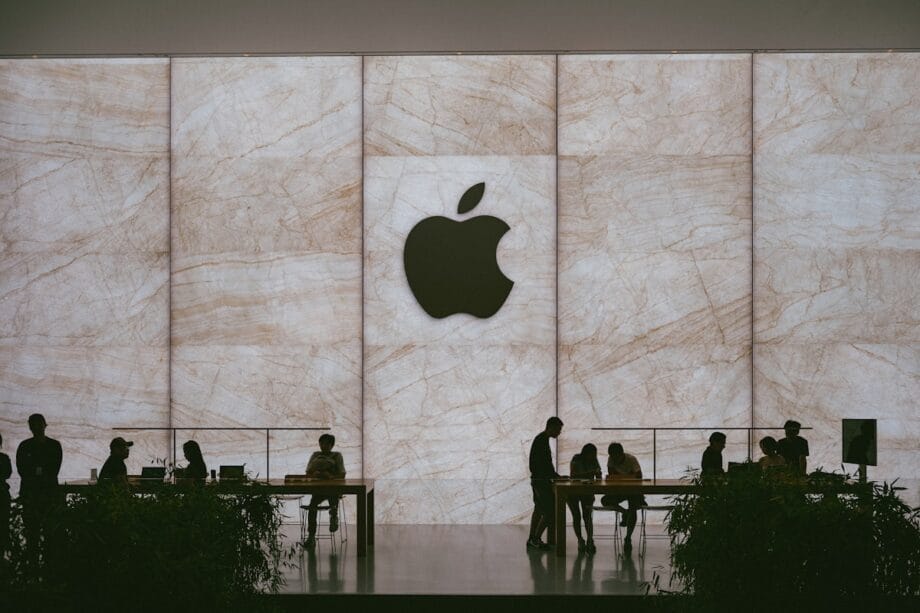iPhone 17 Fuels Apple’s Ascent Toward a $4 Trillion Valuation
iPhone 17 Sales Propel Apple Towards Record $4 Trillion Valuation (Credit: Apple Inc.)
The iPhone 17 has undeniably marked a pivotal success for Apple Inc., evidenced by a remarkable increase in its market capitalization, approaching $4 trillion (£3.12 trillion GBP).
This substantial momentum is not merely a consequence of a sudden shift in strategy but rather a culmination of the carefully orchestrated launch of the iPhone 17 series, which, despite garnering mixed critiques, has demonstrated impressive early sales.
Apple has reaffirmed its leadership in both the smartphone and broader consumer technology markets, managing to uphold prices amid challenges such as tariffs and intensifying competition.
Did the iPhone 17 Propel Apple into Trillion-Dollar Territory?
The iPhone 17 series made its grand entrance in September 2025, and preliminary reports indicate a remarkable performance that outstripped its predecessor.
According to Counterpoint Research, within just ten days of its debut in the United States and China, sales of the iPhone 17 models surged approximately 14% higher than those of the widely favored iPhone 16 series.
This significant spike in demand is particularly noteworthy given the current landscape, where numerous smartphone manufacturers are grappling with sluggish upgrade rates and stiff competition in Asia.
Reports highlight Apple’s astute maneuver—rather than resorting to price slashing or aggressive promotions, the company opted to maintain its pricing structure, a decision that reflects robust consumer confidence in the iPhone’s new iteration.
This steadfast pricing strategy, even in the face of apprehensions regarding U.S. tariffs impacting Asian production hubs like China and India, underscores Apple’s adeptness at preserving its brand’s perceived value and ensuring its premium status.
Analysts assert that the implementation of online ordering in China, a notoriously arduous market for Western technology firms, has provided a substantial boost for the December quarter. How the Launch of iPhone 17 Fortified Apple’s $4 Trillion Market Cap.
What Underpins Apple’s Strategy?
While the iPhone 17 launch appears to be the keystone driving this valuation surge, a broader lens reveals a tapestry of strategic maneuvers Apple has woven to maintain its supremacy in the sector.
Beyond mere product demand, the stock’s ascendance reflects investor assurances regarding Apple’s capacity to navigate geopolitical challenges and sustain manufacturing stability. Earlier this year, concerns had arisen over competitive pressures in China and tariffs imposed on imports from Asia, particularly India.
In response, Apple made a substantial commitment, pledging an additional $100 billion investment in the United States, thereby assuaging market anxieties about its global supply chain resilience and long-term growth prospects, all while tapping into its Asian markets.
Analysts from brokerage firm Evercore ISI have included Apple on their ‘Tactical Outperform’ list, citing strong indicators that the company will exceed earnings expectations in the forthcoming quarter alongside optimistic forecasts—news that resonates positively with shareholders.
Hence, it appears that the confluence of robust product demand, consistent pricing, and strategic investments has created a compelling narrative that elevates investor sentiment, culminating in Apple’s soaring valuation.
What Does a $4 Trillion Valuation Represent for Apple?
For Apple, the achievement of nearing the monumental $4 trillion milestone transcends mere financial metrics. This landmark not only signifies a glorious achievement for the company but also illustrates its profound integration into consumers’ digital landscapes and the enduring resilience of its business model throughout the years.
With early indicators suggesting that the iPhone 17 is surpassing expectations, Apple is reconfirming its stature not solely as a smartphone manufacturer but as a cornerstone of a broader technological ecosystem, a role it has adeptly played over the years.
Furthermore, this surge in demand demonstrates that even in substantial markets like the U.S. and China, a meticulously executed product launch, such as that of the iPhone 17 series, can reignite growth.
For Apple’s investors, this evolution may validate the company’s overarching strategy and provide a rationale for valuations that frequently attract scrutiny from industry magnates.

Conversely, for competitors, this elevates the benchmark; replicating Apple’s blend of brand equity, ecosystem integration, and supply chain acumen poses a formidable challenge.
Nonetheless, the ultimate test lies in Apple’s ability to sustain this momentum beyond the initial launch period. Will the iPhone 17 continue to command strong demand throughout its product lifecycle?
Can Apple consistently navigate pressures in high-competition areas like China? Furthermore, will the additional services and wearable divisions maintain growth at a commensurate rate? These inquiries will significantly influence whether the lofty valuation can be justified in the long run.
Source link: Inkl.com.






